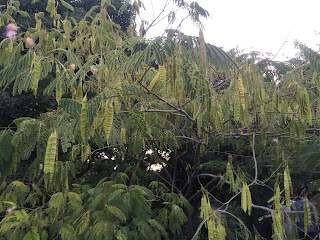Jaunt in Chiba in Fall (1/2)
October 9th is Sports Day, one of the national holidays of Japan. I have also a remaining paid day off from my intern company, so I decided to travel around Boso peninsula in Chiba, with very cheap train and bus free-pass, 4700 yen for two days.
Introduction: Where is Chiba?
Chiba prefecture is in the Greater Tokyo area. It is located to the east of Tokyo, populated more than 6 millions. The prefecture has a big peninsula, called Boso, so it is surrounded by sea and it doesn't have high mountains unlike other Greater Tokyo prefectures (Tokyo, Kanagawa, Saitama, and Yamanashi the highest). Chiba-city, the biggest city of the prefecture is 40 minutes from Tokyo by train, but the peninsula is a little big and it takes more than 4 hours to move around it by local trains.
If you have been to Tokyo once, perhaps you came to Tokyo from Narita airport. Narita is in Chiba, but it's far north to the Boso area. You might have visited Tokyo Disneyland or Disney Sea, where is also in Chiba but it's right next to Tokyo. Boso peninsula is not well-known, compared to those famous places (or have you been to Kamogawa Sea World? If so, I'd bet you have lived in Tokyo for years or your fursona is marine.)
From Chiba to Kisarazu to Kazusa-Kameyama
Even in Greater Tokyo, there is an exemplary Japanese rural area in Chiba. A few houses are surrounded by paddy fields, and those paddy fields are surrounded by mountains (even though mountains in Chiba are not high.)
After leaving some satellite cities such as Ichihara and Sodegaura, suddenly grass field and forests appeared. It is quite common in towns outside Tokyo, but here is still in a city, and I could come here directly from Tokyo by a local train.
At Kisarazu station (Kisarazu is famous for being one side of underground tunnel connecting Chiba and Kanagawa, the other side of Greater Tokyo separated by Tokyo bay.), I transferred to the Kururi line, the most minor line in the Tokyo area.
I like to take a picture or small river, and since there is a large dam lake in Kameyama, the train crossed the river several times, so I was very excited to see the flowing water (but if you want to see beautiful riverside from the train around Tokyo area, I'd definitely recommend going to Nagatoro, Saitama!). The third picture reminds me of some rustic stories, such as Totoro, Wolf Children and Morenatsu. However, it is a pity that a lot of the houses are now inhabited and these rice fields are being ruined.
Kazusa-Kameyama station is a very small terminus in Chiba pref. There are only 8 trains leaving in a day. I arrived there around 2PM, but the previous train came around 9AM and the next train would come there at 5PM.
Lake Kameyama is majestic (it is not big in area), and boats were sailing quietly.
Retrospective stores were seen in front of the station entrance. Judging from the street, Kameyama used to be a sightseeing spot, having hot springs and rental boats. The liquor shop in the third picture were still active, although I didn't have time to get in.
From Kisarazu to Tateyama to Shirahama
After spending only 15 minutes at Kameyama station, I returned directly to Kisarazu station, and transferred to the Uchibo line, heading for Tateyama, the (second) southernmost city in Chiba.
I felt the forest in Boso peninsula was a little different from other parts of Japan. It contains more broadleaf evergreen trees than others. I am not sure about it though. After passing through the forest area, seashore was shown to my eyes. I remembered that I visited Tateyama 10 years ago as a swimming camp of my junior high school, but the camp place was not seen from the train (I remember I had seen the train from the camp place though.)
And finally, I reached at Tateyama station. It was getting dark but it takes 40 minutes for the bus to Shirahama, the southernmost point of Chiba.
At 5:50PM, I arrived at Shirahama. There is a lighthouse called Nojimazaki lighthouse, but it was so late that I decided to go there the next day. After that, I had a ramen dinner, featuring the local seaweed called Habanori (I wanted to eat Awabi ramen, but the restaurant serving one was already closed.)
Now I'm writing a blog at today's inn, very cheap (3000 yen, without dinner and breakfast) but it looks like an old student's dorm in novels. I found crabs are walking in a corridor of the inn. Thanks to the only supermarket in Shirahama, I could buy tomorrow's breakfast and juice and tea, so I am ready for tomorrow's travel.
I'm planning to visit and write about the lighthouse I mentioned and Katsuura-city, where is famous for fishery and tantanmen noodle.























Comments
Post a Comment